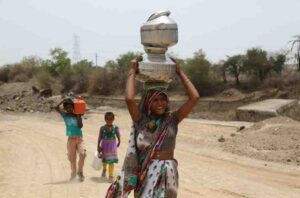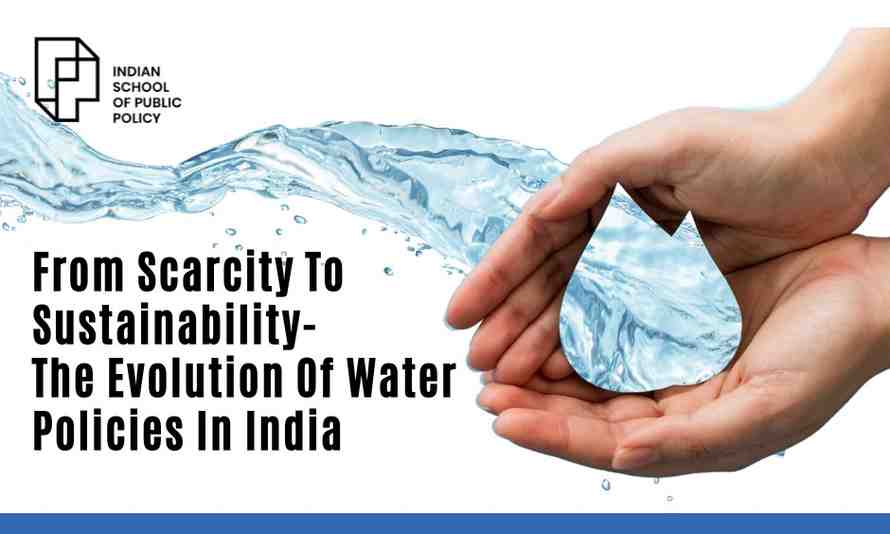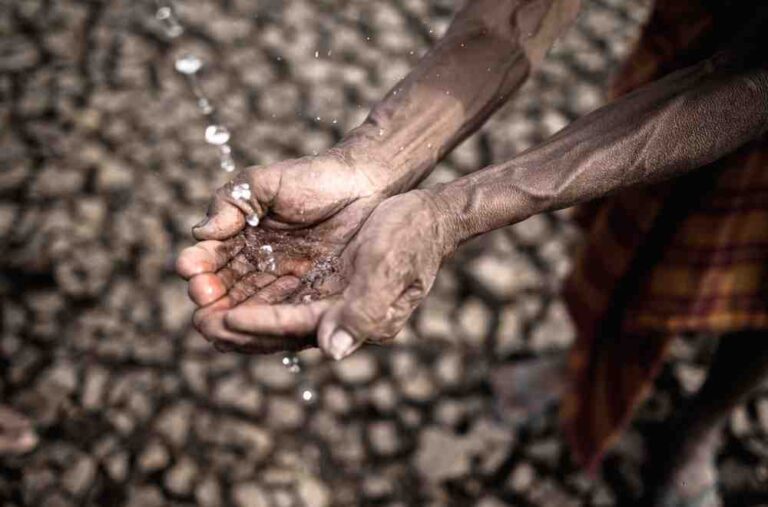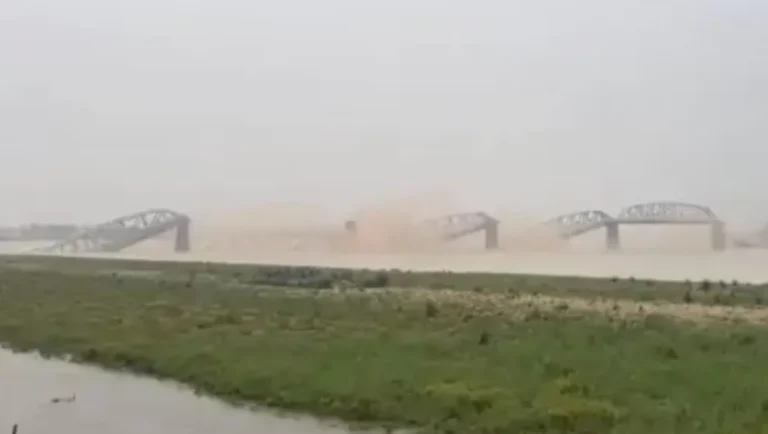Water crisis in India has escalated to a critical point by 2025, with the nation grappling with what might be its most severe drought in history. With a population of over 1.4 billion, the challenge of providing adequate water resources has become a multifaceted crisis affecting agriculture, industry, public health, and social stability. This article delves into the current state of India’s water resources, the contributing factors, the impact on various sectors, governmental and community responses, and future prospects.
The Current Scenario: A Thirsty Nation
India, home to 18% of the world’s population but possessing just 4% of the world’s freshwater resources, is under immense pressure. The monsoon season, traditionally a time of replenishment, has been increasingly erratic, with some areas experiencing floods while others suffer from drought. By 2025, the situation has worsened: several major reservoirs are at critically low levels, groundwater tables are dropping at alarming rates, and many urban centers are facing acute shortages. The NITI Aayog’s “Composite Water Management Index” report has already highlighted that 21 cities in India are expected to run out of groundwater by 2025, a prediction that has largely come true.
By January 2025, the water situation in India has reached a critical juncture, with large swathes of the country experiencing unprecedented drought conditions. The monsoon of the previous year was particularly erratic, with some regions receiving far less rain than usual, while others faced severe flooding, disrupting the traditional balance of water availability across seasons. This has led to a significant drop in the levels of major reservoirs, with many now operating at less than 20% capacity.
In urban areas, the crisis is palpable. Cities like Bangalore, Chennai, and Delhi are on the brink, with water being rationed in some neighborhoods, and the reliance on tanker trucks has become an everyday reality for millions. The depletion of groundwater is alarming; in some regions, borewells must go hundreds of meters deep to reach water, and even then, the yield is often saline or contaminated. The Central Ground Water Board has reported that over 25% of the country’s groundwater blocks are now in the “over-exploited” category, indicating that water withdrawal exceeds recharge.
Rural India, where agriculture is the primary source of livelihood, is suffering immensely. The unpredictability of rainfall has led to crop failures, with farmers in drought-hit areas like Maharashtra and Rajasthan facing not only economic ruin but also a deepening crisis of debt and despair. The reliance on groundwater for irrigation, combined with poor water management practices, has led to the drying up of wells and the degradation of soil quality.

The social fabric is fraying as water scarcity leads to conflicts over access to this vital resource. Reports of violence over water distribution are becoming more common, and the emergence of “water mafias” in urban areas has created a black market for water, where the most vulnerable pay exorbitant prices for basic needs.
This crisis is not just about the availability of water but also its quality. Industrial pollution, agricultural runoff, and urban waste have contaminated many water bodies, making the little water that is available often unsafe for consumption without treatment. This has led to a public health emergency, with outbreaks of waterborne diseases increasing across both urban and rural landscapes.
Causes of water crisis in India 2025: A Confluence of Factors
he water crisis in India in 2025 is the culmination of various longstanding and emerging factors, each contributing to the severity of the situation:
- Climate Change: Global warming has significantly altered weather patterns in India. The once-reliable monsoon now arrives either too late, too early, or with insufficient rainfall, leading to both droughts and unexpected floods. This unpredictability has disrupted traditional water management practices, particularly in rain-fed agriculture, which forms a significant part of India’s farming landscape.
- Population Growth: India’s population has grown exponentially, now one of the densest in the world. This population boom has led to an increased demand for water not just for drinking but for sanitation, food production, and industrial use, far outstripping the available water resources. Urbanization has further concentrated this demand, putting immense pressure on urban water supplies.
- Agricultural Practices: The agricultural sector’s reliance on outdated and water-intensive irrigation methods like flood irrigation is a major contributor. The cultivation of crops like paddy, sugarcane, and wheat, which require substantial water, often in regions with naturally low water availability, has led to the over-extraction of groundwater. This, combined with the lack of crop diversification towards less water-thirsty varieties, has depleted water reserves at an alarming rate.
- Industrialization and Urbanization: As India has industrialized, industries such as textiles, chemicals, and power generation have become major water consumers. Urban expansion has led to the paving over of natural water recharge areas, reducing the land’s ability to absorb and store rainwater. Moreover, industrial waste and urban sewage have polluted rivers and lakes, diminishing the quality and quantity of usable water.
- Deficiencies in Water Management: There’s a critical gap in water governance. The absence of a holistic approach to water management, coupled with corruption and poor infrastructure maintenance, has led to inefficiencies in water storage, distribution, and use. Despite numerous policies and programs, implementation remains patchy, with water often not reaching where it’s needed most due to political or administrative failures.
These factors, weaving together, have created a perfect storm of water scarcity, pushing India towards a crisis point where immediate, innovative, and sustainable solutions are not just necessary but imperative.
Impact Across Sectors: From Fields to Factories
The water crisis in India by 2025 has deeply penetrated various sectors, revealing vulnerabilities and prompting significant repercussions:
- Agriculture: The backbone of India’s economy, farming, is on the brink. The depletion of groundwater has led to crop failure, reduced yields, and farmer suicides. The inability to irrigate fields has pushed many into debt, with significant repercussions for food security and rural livelihoods.
- Industry: Water-intensive industries like textiles, steel, and power generation are facing operational challenges. Companies are either relocating to water-abundant areas or investing heavily in water recycling technologies, which increases costs and impacts competitiveness.
- Public Health: With water scarcity comes the increased incidence of waterborne diseases. The quality of available water has deteriorated, leading to health crises in both rural and urban areas, where access to clean water is becoming a luxury.
- Urban Life: Cities are witnessing social unrest as water scarcity leads to conflicts over distribution. The reliance on water tankers has not only increased costs for residents but has also given rise to a black market where water is sold at premium prices.
- Environment: The natural water bodies are drying up, leading to ecological imbalances, loss of biodiversity, and the degradation of vital riverine systems. The overuse of groundwater has led to land subsidence in some areas, further complicating the crisis.
Governmental and Community Responses: Tackling Water Crisis in India
In response to the escalating water crisis by 2025, both governmental and community-driven initiatives have been mobilized to address the multifaceted challenges:

- Jal Jeevan Mission (JJM): Launched with the ambitious goal of providing safe and adequate drinking water through individual household tap connections by 2024, JJM has been a cornerstone of the government’s strategy. However, the pace of implementation has been uneven across states, with logistical, financial, and administrative hurdles slowing progress. There’s an ongoing effort to streamline processes, increase funding, and enhance local governance to meet this target.
- Atal Bhujal Yojana: This initiative focuses on community-led sustainable groundwater management. It promotes awareness and capacity building at the local level, encouraging communities to take charge of their water resources through conservation, recharge, and efficient use practices. The program has shown promise in regions where community involvement is high, but scaling up remains a challenge.
- Namami Gange Programme: Centered on the rejuvenation of the Ganga River, this program addresses not only water quality but also aims to increase water availability. By constructing sewage treatment plants, managing industrial effluents, and enhancing river conservation, it seeks to restore one of India’s most vital water resources. However, the pace of river cleanup and the extent of pollution control are still catching up to the scale of the problem.
- Community Efforts: Grassroots movements have been pivotal, especially in rural India. Organizations like the Tarun Bharat Sangh in Rajasthan have successfully revived traditional water harvesting structures like johads (earthen check dams), leading to water table replenishment in arid areas. Similarly, urban community groups are advocating for rainwater harvesting and decentralized water management solutions to reduce dependency on municipal water supplies.
- Innovative Projects and NGOs: Non-governmental organizations and private initiatives are playing crucial roles. From developing apps for water management to setting up water ATMs in slums, these efforts are about both immediate relief and long-term sustainability. However, these projects often face issues with funding, scalability, and integration with broader governmental strategies.
Despite these efforts, the response is still grappling with the sheer magnitude of the crisis. Challenges include ensuring equitable water distribution, combating corruption in water projects, and fostering a culture of conservation that surpasses current efforts. The synergy between government policies, local initiatives, and public participation is crucial for overcoming these obstacles and steering India towards water security. The official website for the India Government’s National Water Mission is https://nwm.gov.in/.
Path Forward: Strategies for Sustained Water Security
To navigate out of this crisis, India needs a multi-pronged approach:
- Water Conservation and Efficiency: Promoting techniques like drip irrigation, shifting to less water-intensive crops, and fostering a culture of conservation at the household level.
- Infrastructure and Technology: Investment in building more storage facilities, enhancing water treatment processes, and adopting technologies like desalination where feasible.
- Policy Reforms: Implementing stricter water use regulations, better inter-state water sharing agreements, and ensuring transparency and accountability in water management.
- Climate Adaptation: Developing resilient agricultural practices, improving weather forecasting, and disaster preparedness linked to water scarcity.
- Public Education and Participation: Educating citizens on water conservation, involving them in decision-making processes, and leveraging technology for better water usage tracking.
As India stands on the brink of a drought in 2025, the narrative must shift from crisis management to long-term sustainability. The water crisis is a stark reminder of the need for systemic change, where every drop of water is valued, and every policy decision is made with future generations in mind. The challenge is immense, but so is the opportunity to redefine India’s relationship with this most precious of resources.




